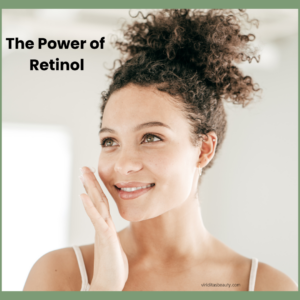Unlocking the Power of Retinol: Your Guide to Radiant, Youthful Skin

In the vast world of skincare ingredients, retinol stands out as a true game-changer. This vitamin A derivative has gained immense popularity for its ability to transform skin from the inside out. In this comprehensive guide, we’ll explore the power and benefits of retinol, how it works, and how to effectively incorporate it into your skincare routine for optimal results.
What is Retinol and How Does it Work?
Retinol is a type of retinoid, a class of compounds derived from vitamin A. Unlike many skincare ingredients that focus solely on the surface of the skin, retinol penetrates deep into the dermis, the skin’s middle layer. Once there, it acts as a powerful antioxidant, neutralizing free radicals and stimulating the production of essential proteins like collagen and elastin. This process leads to a remarkable “plumping” effect, reducing the appearance of fine lines, wrinkles, and enlarged pores.
The Benefits of Retinol:
- Anti-Aging: Retinol is renowned for its anti-aging properties, effectively minimizing fine lines, wrinkles, and age spots.
- Acne Treatment: It helps unclog pores and reduce inflammation, making it an excellent choice for treating mild to moderate acne and related scarring.
- Even Skin Tone: Retinol can help fade sunspots, hyperpigmentation, and melasma, resulting in a more even and radiant complexion.
- Texture Improvement: Regular use of retinol can smooth and refine skin texture, giving you a smoother, more youthful appearance.
Incorporating Retinol into Your Skincare Routine:
To maximize the benefits of retinol, it’s essential to incorporate it into your daily skincare regimen. However, it’s crucial to introduce retinol gradually to minimize potential side effects. Start by applying it every other night or every third night, gradually increasing frequency as your skin adjusts. It’s best to apply retinol at night, as it can make your skin more sensitive to UV light.
Choosing the Right Retinol Product:
When selecting a retinol product, consider your skin type and concerns. Over-the-counter (OTC) retinol is an excellent choice for beginners and those with sensitive skin, offering a gentler approach to anti-aging and mild acne treatment. Prescription retinoids, on the other hand, are more potent and suitable for those seeking dramatic results, but they require a dermatologist’s supervision.
Potential Side Effects and How to Mitigate Them:
While retinol is generally well-tolerated, some individuals may experience mild side effects such as dryness, redness, itching, and peeling. To minimize irritation, apply retinol about 30 minutes after washing your face, and consider cocktailing it with a moisturizer. In rare cases, more severe reactions like acne flare-ups or increased sensitivity may occur. If you experience persistent discomfort, consult with a skincare professional.
Retinol Alternatives:
For those who find retinol too harsh or incompatible with their skin, there are several plant-based alternatives available. Ingredients like moth-bean extract, bakuchiol, peptides, and niacinamide can offer similar benefits with a gentler touch.
Retinol is a powerful ally in the quest for radiant, youthful skin. By understanding its benefits, proper application techniques, and potential side effects, you can harness its transformative power to achieve your skincare goals. Remember, consistency is key, and results may take several weeks to become apparent. If you have any concerns or questions, don’t hesitate to consult with the skincare professionals at Viriditas Beauty to create a personalized routine that works best for you.
